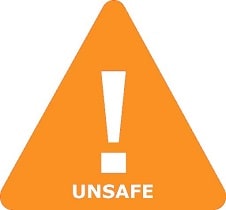Is Hydroserpine Plus Safe in Breastfeeding
Question
I am a breastfeeding mother and i want to know if it is safe to use Hydroserpine Plus? Is Hydroserpine Plus safe for nursing mother and child? Does Hydroserpine Plus extracts into breast milk? Does Hydroserpine Plus has any long term or short term side effects on infants? Can Hydroserpine Plus influence milk supply or can Hydroserpine Plus decrease milk supply in lactating mothers?
Hydroserpine Plus lactation summary

- DrLact safety Score for Hydroserpine Plus is 5 out of 8 which is considered Unsafe as per our analyses.
- A safety Score of 5 indicates that usage of Hydroserpine Plus may cause serious side effects in breastfed baby.
- Our study of different scientific research indicates that Hydroserpine Plus may cause moderate to high side effects or may affect milk supply in lactating mother.
- Our suggestion is to use safer alternate options rather than using Hydroserpine Plus .
- It is recommended to evaluate the advantage of not breastfeeding while using Hydroserpine Plus Vs not using Hydroserpine Plus And continue breastfeeding.
- While using Hydroserpine Plus Its must to monitor child for possible reactions. It is also important to understand that side effects vary largely based on age of breastfed child and time of medication in addition to dosage.
- Score calculated using the DrLact safety Version 1.2 model, this score ranges from 0 to 8 and measures overall safety of drug in lactation. Scores are primarily calculated using publicly available case studies, research papers, other scientific journals and publically available data.
Answer by Dr. Ru: About Hydroserpine Plus usage in lactation
Check-up for sedation or hypotonia.In Spain, it has been commercialized in association with diuretic drugs.
Answer by DrLact: About Hydroserpine Plus usage in lactation
Because no information is available on the use of Hydroserpine Plus during breastfeeding and it might adversely affect the breastfed infant, an alternate drug may be preferred, especially while nursing a newborn or preterm infant.
Hydroserpine Plus Side Effects in Breastfeeding
Although not well documented, Hydroserpine Plus is said to cause nasal stuffiness and increased tracheobronchial secretions in breastfed infants.[1]
Hydroserpine Plus Possible Effects in Breastfeeding
Hydroserpine Plus has reportedly caused galactorrhea and has been used to increase breastmilk production, although it is obsolete for this use.[2][3][4]
Alternate Drugs
Nimodipine(Safe)
Bisoprolol(Low Risk)
Guanfacine(Low Risk)
Nifedipine(Safe)
Enalapril(Safe)
Bosentan(Low Risk)
Atenolol(Unsafe)
Diltiazem(Safe)
Nicardipine(Safe)
Minoxidil(Safe)
Acebutolol(Unsafe)
Timolol(Safe)
Nebivolol(Unsafe)
Verapamil(Safe)
Chlorthalidone(Dangerous)
Sotalol(Low Risk)
Methyldopa(Safe)
Chlorothiazide(Safe)
Valsartan(Low Risk)
Trandolapril(Dangerous)
Captopril(Safe)
Propranolol(Safe)
Lisinopril(Low Risk)
Terazosin(Unsafe)
Torsemide(Low Risk)
Bumetanide(Low Risk)
Isradipine(Low Risk)
Telmisartan(Unsafe)
Spironolactone(Safe)
Indapamide(Low Risk)
Prazosin(Unsafe)
Reserpine(Unsafe)
Bendroflumethiazide(Unsafe)
Nadolol(Unsafe)
Ramipril(Low Risk)
Benazepril(Safe)
Metoprolol(Safe)
Hydrochlorothiazide(Safe)
Losartan(Low Risk)
Amlodipine(Low Risk)
Hydralazine(Safe)
Irbesartan(Unsafe)
Levobunolol(Low Risk)
Furosemide(Low Risk)
Labetalol(Safe)
Fosinopril(Low Risk)
Eprosartan(Low Risk)
Nitrendipine(Safe)
Felodipine(Low Risk)
Doxazosin(Safe)
Nisoldipine(Low Risk)
Carvedilol(Low Risk)
